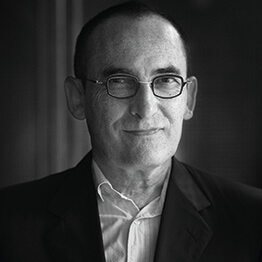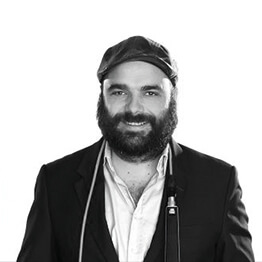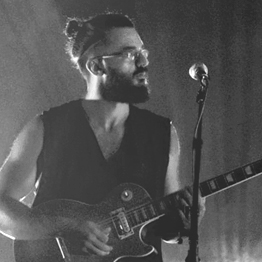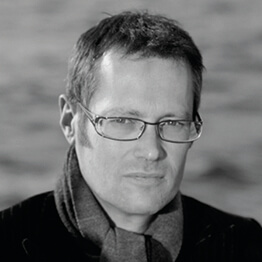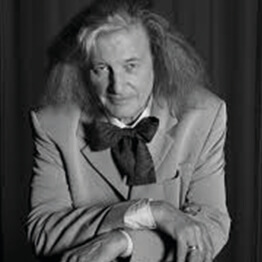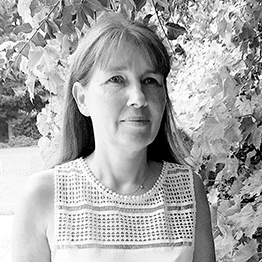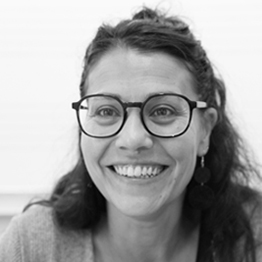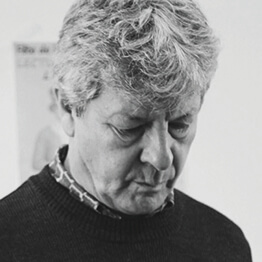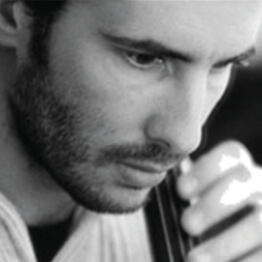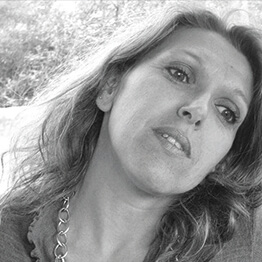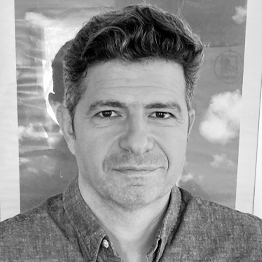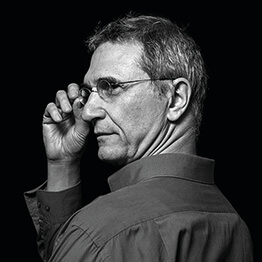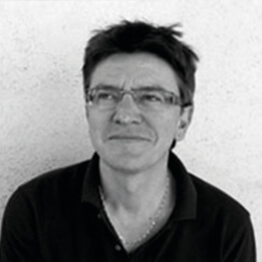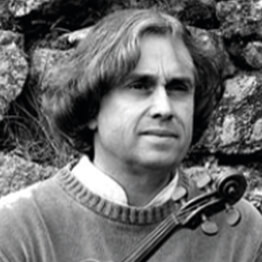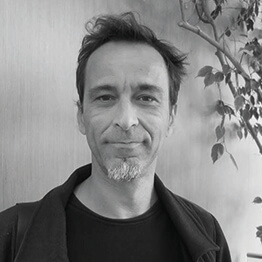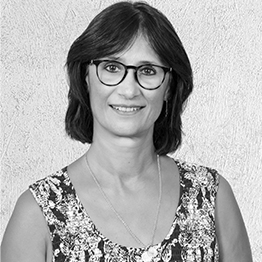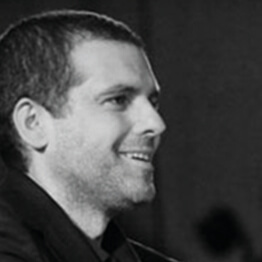state diploma (de) for music teachers
Level II – 180 ECTS credits – 3 years – 1350 hours
Course linked to the bachelor’s degree in Musicology, in partnership with the Faculty of Arts, Letters, Languages and Humanities (UFR ALLSH) at Aix-Marseille University
The DE for music teachers can be earned as part of :
- A three-year joint course with a bachelor’s degree in Musicology from the Faculty of Arts, Letters, Languages and Humanities (UFR ALLSH) at Aix-Marseille University, at the end of which the student will earn the State Diploma (DE) for Music Teachers and a Bachelor’s in Musicology.
- An adjusted programme as part of a DNSPM + Bachelor + DE in four years, with the DE being open on the base of a competitive exam beginning in the second year of the DNSPM. At the end of the four years of studies, the student will earn the DNSPM, the State Diploma (DE) for Music Teachers and a Bachelor’s in Musicology.
IESM is accredited to issue the State Diploma (DE) for Music Teachers in the following disciplines :
INSTRUMENTAL OR VOCAL INSTRUCTION
- Classical to contemporary music
- Early music
- Traditional music
- Jazz and improvisational music
- Amplified current music
MUSICAL TRAINING
ENSEMBLE LEADERSHIP
- Optional subject : vocal
- Optional subject : instrumental
ACCOMPANIMENT
- Optional subject: Music or dance

AIX-MARSEILLE UNIVERSITY
Aix-Marseille University has a student body of 74,000, including 10,000 international students. In keeping with its Mediterranean heritage, Aix-Marseille University is the fruit of the merger of the Universities of Provence, the Mediterranean, and Paul Cézanne. Today, Aix-Marseille University is the biggest French-speaking university in the world, making Aix and Marseille a world-renowned university cluster.
With its wide array of fundamental and vocational courses (bachelors, masters, doctorates, professional bachelors, engineering degrees, State health diplomas and university diplomas in technology), Aix-Marseille University offers a multitude of high-quality classes in five core subject areas: Arts, Letters, Languages and Humanities; Law and Political Science; Economics and Management; Health; and Science and Technology. Classes for the bachelor’s degree in Musicology are given at the Faculty of Arts, Letters, Languages and Humanities (ALLSH), located on the Aix-en-Provence campus.
ENTRANCE EXAM 2021
Initial training
Applications open beginning on : Monday, 11 January 2021
Deadline for applications : Friday, 26 March 2021
Calendar of specific instrument tests and interviews with the judges :
26 April to 7 May 2021
Lifelong learning
The application calendar will be communicated at a later date
de teaching team
academic coordinators
ensemble practicums
complementary musical practicums
teaching practices & culture
interdisciplinary skills
professional development
informations about the d.e
course organization d.e
course length and contents
The standard time to complete the course is 1,350, typically spread out over six semesters.
The curriculum is broken down into coherent series called teaching units (TUs):
- TU1 – MUSICAL PRACTICUMS
- TU2 – CONTRIBUTING TO IESM’S ARTISTIC AND EDUCATIONAL PROJECT
- TU3 – KNOWLEDGE AND ASSOCIATED PRACTICES
- TU4 – MUSICAL CULTURE
- TU5 – MODERN LANGUAGES
- TU6 – IMPLEMENTING AN EDUCATIONAL PROJECT
- TU7 – RESEARCH
Each TU comprises a series of class modules. The details of the TUs and their modules are presented in the DE curriculum outlines.
The normal length of this course is six semesters. This may be extended to seven or eight semesters of attendance of DE classes if the student has to retake any TUs or in other extraordinary circumstances.
The partnerships between IESM and Aix-Marseille University involve a division of classes based on chosen fields of expertise. A system is in place to jointly certify the results.
The structure in question (IESM or Aix-Marseille University) is responsible for monitoring and evaluating the students in each module, under the authority of the IESM Director.
The methods for doing so are jointly prepared and communicated to the students.
The number of hours of instruction may be defined by semester, by year or over the entire length of the course, depending on the specific needs of the discipline or of the student, or as a function of specific organizational constraints.
The classes may vary from one year to the next, based on the orientations provided by the teaching team.
The contents may differ by field, specialization or optional subject and may be adapted to a student’s specific needs, in view of their prior learning or experience.
Each year, IESM classes are subject to approval of the budget by the institute’s Board of Governors. Consequently, students may not demand any class that is not planned or given (whether part of the primary or complementary curriculum).
reference texts
The DE (State Diploma) for Music Teachers is governed by the following regulatory texts:
- French Decree 2016-932 of 6 July 2016 on the State Diploma for Music Teachers
- French Order dated 5 May 2011, as amended, on the State Diploma for Music Teachers and defining the conditions for the accreditation of higher education institutions to issue that diploma
The DE for Music Teachers is included on the national list of Level II professional certifications within the interministerial definition of certification levels.
The DE for Music Teachers leads to 180 European credits (ECTS).
The organization of the course and the issuing of the DE for Music Teachers are both subject to the course’s academic policy, adopted following deliberations by the IESM Board of Governors on 20 December 2018.
IESM is accredited to issue the DE (State Diploma) for Music Teachers, by a ministerial decision dated 13 July 2018.
The DE for Music Teachers can be earned in one of three ways:
- Initial training
- Lifelong learning
- Accreditation of prior experiential learning (VAE)
For initial training, the DE for Music Teachers can be earned as part of:
- A three-year joint course with a bachelor’s degree in Musicology from the Faculty of Arts, Letters, Languages and Humanities (UFR ALLSH) at Aix-Marseille University, at the end of which the student will earn the State Diploma (DE) for Music Teachers and a Bachelor’s in Musicology
- An adjusted programme as part of a DNSPM + Bachelor + DE in four years, in which students can enrol beginning in the second year of the DNSPM.
IESM is accredited to issue the State Diploma (DE) for Music Teachers in the following disciplines:
INSTRUMENTAL OR VOCAL INSTRUCTION
- Classical to contemporary music
- Early music
- Traditional music
- Jazz and improvisational music
- Amplified current music
MUSICAL TRAINING
ENSEMBLE LEADERSHIP
- Optional subject: Vocal
- Optional subject: Instrumental
ACCOMPANIMENT
- Optional subject: Music
- Optional subject: Dance
educational project
Thanks to its inclusion in a higher education and research process, the acquisition of practical artistic skills and methodologies, and the organization of music instruction, this programme has three goals in addition to fostering the development of artistic excellence in its students:
- To encourage students to engage in research, from a perspective of both their artistic and teaching practices: defining a personal artistic project, finding the resources to implement it and trying new practices (improvisation, composition, etc.)
- To encourage students to question their relationships with today’s music pupils: implementing differentiated teaching practices and developing critical thinking that demonstrates knowledge of the main educational challenges
- To encourage students to consider their careers in view of regional public policies: getting to know the professional environment in which they will be seeking employment and developing the ability to run projects in a region.
FOCUS AREA – TRAINING ON THE GROUND
The uniqueness of IESM’s project is based on the pragmatic aspect of its courses, which are closely connected to practices on the ground:
- From an artistic perspective, through chamber music workshops, openness to the different aesthetics taught to students and the many and diverse artist experiences provided throughout the course (concerts, orchestra practicums, personal instrument coaching, etc.)
- As part of teaching actions, through:
- work placements on the ground, supervised by academic advisors
- frequent workshops on teaching practices, designed for experimentation and research to enable students to react to different scenarios
- In the approach to the realities of the profession of the teaching artist and of institutional operations, especially during professional immersion training.
These many practical experiences foster the well-reasoned deconstruction of the students’ artistic, teaching and professional performances, and constitute a prerequisite for developing their own teaching theories.
FOCUS AREA 2 – THE ASSIMILATION OF CONTEMPORARY TEACHING CHALLENGES
IESM’s educational project hinges on three main areas:
. The connection between individual lessons and group classes
This involves making student teachers aware of the natural complementarity between individual lessons, whose effectiveness is well-known for teaching the technical aspects of instrumental and musical training, and group classes, including all sorts of teaching practices associated with the group, so as to meet the social expectations of families and local and regional governments.
Over and above immediate pleasure, these social music practices are also the ones with the greatest chances of standing the test of time amongst pupils, beyond their training at a conservatory or in their future artistic practice as amateurs, considering that the primary function of specialized French instruction is now to do what is needed to ensure that as many pupils as possible continue with their art beyond their conservatory classes.
Moreover, these different forms of group classes (group lessons, ensemble voice training, instrumental workshops, accompaniment, etc.) are the only ones that give pupils who play a monodic instrument direct, palpable contact with polyphonic music.
Group teaching demands that future instructors become proficient in the leadership of instrumental and vocal ensembles, exercise harmonic control over the execution of polyphonic pieces, manage small groups, accompany their own pupils, arrange pieces for them and encourage them to perform at schools to expand the reach of their class.
These skills are not necessarily a part of their education prior to enrolling at IESM, so it is our mission to help our students acquire them.
. The organic incorporation of musical culture into instrumental instruction
For too long, a majority of instructors have considered “scholarly” musical disciplines (analysis of musical language and the construction of pieces, composition, history and aesthetics) to be ancillary to instrumental instruction.
This is undoubtedly because, in their own training, those disciplines were separated from the instrumental practices: on the one hand, they worked on pieces with a “great” instructor (a recognized professional) and, on the other, a curriculum of “complementary disciplines” was imposed on them, which focused on studying pieces other than the ones they played themselves.
The training at IESM aims to organically blend these different aspects of music instruction so as to enable students to lead their own pupils, beginning in their first cycle of studies, to analyse the pieces they play on their instruments and to understand the language (at their level), the logic behind how all the parts come together, the expressiveness of the piece, how it is rooted in the style of the era, and how popular forms of music interlink with their more learned derivatives. All these different forms of “culture” combine to build up the independence that teachers seek to develop in future adult musicians.
. Strategies for refreshing pupil assessment methods
Given these new challenges facing specialized music instruction, the persistence of old tests and final exams, in more or less modernized forms, is worth questioning. Doing away with old perspectives on exams is not however an educational project for our future teachers.
Still, they must learn to detect and describe the skills associated with the behaviour of a “musician” in pupils, utilize a musically demanding repertoire that can reveal their true musical potential, help our future teachers to better identify what IESM expects of them, like the skills they must display, and help them identify their learning profile so they can develop personal working strategies that will be the most conducive to their success.
This is why it is so important for our students to learn and practice other forms of assessment during their studies, so they can move into the working world with a more complete toolbox:
- Diagnostic assessments (to identify the pupil’s prerequisites and training needs, and to help guide their studies at IESM)
- Criteria-based assessments (focusing on guidelines, criteria for success, without seeking to compare the pupils against one another)
- The different variations on formative assessments, self-assessments and peer assessments (within the same class), through which pupils gradually learn to adjust their own learning, thanks to the support of their instructors and their classmates; this is the price of developing the motivation and independence of future amateurs and professionals alike
- The emphasis placed on the orientation towards group learning would be ineffectual without assessments focusing on this aspect of training.
FOCUS AREA 3 – CONNECTION TO THE PROFESSIONAL WORLD OF CULTURE AND SPECIALIZED ART INSTRUCTION
By challenging our students’ artistic, teaching and professional performances and incorporating culture into the process of questioning and rebuilding practices, this course offers all our future teachers the tools and skills they need to assimilate new knowledge, by daring to engage in research that is in line with their artistic practices and the evolution of the arts, including the performance arts.
By going beyond the “founding divisions of the conservatory” (theory/music, theory/practice, group/individual, oral/written, etc.), this course also seeks to develop our students’ ability to gain some distance and engage in critical thinking, which will only benefit the development of their personal projects.
As a result, support for the emergence of young teaching artists and their job placement has become a key objective of IESM’s project and is based on three main lines:
- Knowledge of the challenges involved in specialized art instruction and of the driving functions of an institutional project in a region
- Proficiency in the tools involved in the production chain for a public educational and artistic show
- Promotion of multiple skills in our young teaching artists / graduates, the breadth of whose studies constitute a real added value for local and regional governments interested in hiring them.
Admission
GUIDANCE FOR APPLICANTS
IESM will set up a personalized informational and orientation meeting for applicants who request one, prior to their registration for the entrance exam tests or any other procedure that could lead to the DE.
The purpose of that meeting is to inform them about how they can earn the diploma, the classes that meet their needs and, for lifelong learning applicants, how they can obtain funding for the classes that are open to them.
APPLICATION
Applications are available from IESM’s administration or directly from the dedicated page on its website during the application periods defined each year.
Applications will only be accepted if they contain all the documents requested at the time when they collected or downloaded the application for the year in question.
In any case, the completed applications must necessarily be received by IESM by the deadline, as stated in the application and on the website. All applications received after the deadline will be rejected. In anticipation of the entrance exam tests, applicants must provide original copies of the sheet music they will be performing to the members of the judges panel. Photocopies will not be accepted.
The documents attached to the application will not be returned to the applicant.
ADVERTISING OF THE ENTRANCE EXAMS
Admission to a course is dependent on passing a competitive exam for applicants wishing to enrol in initial training or an entrance exam for applicants wishing to enrol in lifelong learning.
The test calendar is available on IESM’s website, as are the nature of the tests and all other useful information.
Applicants who meet the course’s eligibility criteria will be allowed to sit the exam. They will receive a written invitation to the written and oral tests.
THERE MAYBE A LIMITED NUMBER OF SPOTS AVAILABLE
Depending on the diploma and on IESM’s management capacity, the number of spots which are available in each course is defined annually by the Board of Governors, based on a proposal from the Director.
In anticipation of the withdrawal of some admitted applicants, more applicants may be admitted than the number of spots which was originally announced, leading to the creation of a wait list.
The resulting admissions list may therefore include a wait list. The list of admitted applicants will be arranged in alphabetical order (by surname), and the wait list will be organized by order of merit.
ELIGIBILTY CRITERIA
Eligibility for this programme is open to applicants who meet the admission criteria defined by the French Order dated 5 May 2011, as amended, on the State Diploma for Music Teachers and defining the conditions for the accreditation of higher education institutions to issue that diploma, and who have passed the relevant entrance exams.
Aside from the eligibility criteria associated with the diplomas or studies, as specified by the orders currently in effect, IESM has no age limits.
However, it is recalled that, in the event of application for a diploma which is dependent on simultaneous enrolment at a university, particularly for a bachelor’s degree (e.g. DE + Bachelor), certain age, skill level or other criteria may be required for admission.
After verifying that the applicants meet all the admission criteria, the Director will establish a list of applicants who have been accepted to sit the entrance exam.
A – ELIGIBILITY CRITERIA FOR INITIAL TRAINING
Eligibility for initial training is conditional upon a successful entrance exam.
Applicants who want to sit the entrance exam must provide proof that they hold:
1. A French or foreign secondary school diploma or certificate, accepted by special approval or as an equivalent,
2. AND a DNOP (Professional National Diploma), a DEM (Diploma of Music Studies), a gold medal or first prize from a public music, dance and dramatic arts institution
OR proof of being duly enrolled in a preparatory class for entrance into higher education arts institutions in the fields of the performance and visual arts, certified by order of the French Minister of Culture, as per the terms of Decree 2017-718 of 2 May 2017 on art education establishments (Section 3, Arts. R.759-9 et seq.) and the order of 5 January 2018 (Art. 6).
Applicants must also provide a CV and cover letter in which they explain their educational project.
Applicants who do not meet these conditions may request special dispensation from the IESM Director.
The Director may allow applicants who do not meet these criteria to take the entrance exam, based on the opinion of a committee of three IESM instructors.
B – ELIGIBILITY CRITERIA FOR LIFELONG LEARNING
Eligibility for the DE for Music Teachers through lifelong learning is conditional upon passing an entrance exam. There are no age limits. Applicants who want to take the entrance exam must meet one of the following conditions:
- Have at least two years’ work experience as a musical artist, potentially certified by proof of receiving 48 appearance fees over the course of two years
- Have at least two years’ music teaching experience as an employee, working at least 5 hours a week, 30 weeks a year, or the equivalent number of hours
· Hold a DEM (Diploma of Music Studies) or a DNOP (Professional National Diploma) and exercise a teaching activity as an employee, working at least 5 hours a week, 30 weeks a year, or be in the process of a career change.
C – ELIGIBILITY THE JOINT COURSE WITH THE DNSPM (ADVANCED TECHNICAL DIPLOMA IN MUSIC)
1. Organization of the DE for Music Teachers programme as part of a joint DNSPM/Bachelor course
The State Diploma (DE) for Music Teachers is a Level II qualification earning 180 ECTS credits.
As part of a course linking the DE to the DNSPM/Bachelor programme, admission to the DE for Music Teachers is open to students in the second year or later of the DNSPM, so long as they pass the bachelor’s entrance exam.
2. Admission criteria
Students who are duly enrolled in the DNSPM/Bachelor course at IESM may request admission to a joint DNSPM/Bachelor/DE programme.
Admission to the DE programme during the course of DNSPM studies is dependent on two conditions: success at the written portions of the DE entrance exam and at the oral exam interview, as defined in the appendix to the academic policy.
JOIN ENROLMENTAT AIX-MARSEILLE UNIVERSITY
All IESM applicants will receive an informational document explaining the need for joint enrolment in the bachelor’s degree in Musicology, Higher Music and Musicology Division, at the Faculty of Arts, Letters, Languages and Humanities (UFR ALLSH) at Aix-Marseille University, as well as the various bridges between IESM and AMU courses, and the subsequent studies made available by this dual degree system. IESM will send its list of admitted DE applicants to the partner university for verification.
At the time of enrolment at IESM, students must contact School Services at Aix-Marseille University’s UFR ALLSH directly to complete their administrative and educational enrolment at the university. Admitted DE applicants must enrol in the bachelor’s degree in Musicology at the university.
The following are exempt from enrolling in the bachelor’s programme /
- Students who hold a French bachelor’s, master’s or doctoral degree in music or musicology, based on the opinion of the committee mentioned in Article 43 of the academic policy
- Students with equivalent foreign degrees from Bologna Process (BMD) signatory countries
- Students with equivalent foreign degrees from countries which have not signed the Bologna Process (BMD), based on the opinion of a committee whose procedures are defined by Aix-Marseille University
Admitted DE students who have already earned university degrees, diplomas or credits must request an accreditation application or have their records transferred from the relevant university.
Enrolment in classes requires annual enrolment or re-enrolment at IESM for the relevant year of studies. Students who meet the eligibility criteria for university studies must also enrol or re-enrol in AMU.
FOREIGN STUDENTS
Foreign students whose place of residence is in France are eligible to sit the entrance exam, so long as they also meet the following conditions:
- An early application for admission (DAP) is required for foreign applicants who hold a foreign secondary school diploma, for their simultaneous enrolment at AMU
- French translations of diplomas and degrees must be provided and, if requested, certification of their equivalence by a recognized organization (ENIC-NARIC)
- Proof of sufficient knowledge of the French language (with proof of passing a test for at least the B2 level), in the form of a certificate from an organization that is accredited by the French government (e.g. Alliance Française, CIEP – International Centre for French Studies, etc.)
A foreign student’s enrolment will only be finalized if they are in possession of the necessary documents allowing them to stay in France (student visa or residence permit for students from outside the EU), on the date of their enrolment.
APPLICANTS WITHOUT A SECONDARY SCHOOL DIPLOMA
Adult students applying for initial training, who do not hold a French or foreign secondary school diploma or certificate, accepted by special approval or as an equivalent, must be able to provide proof that they have a DAEU (Full Access Certificate) before the start of the course. Otherwise, their enrolment at IESM may be revoked.
STUDENTS WITH DISABILITIES (ACCOMODATIONS FOR TESTS AND CLASSES)
Students with disabilities are eligible for the proposed courses.
“Applicants with disabilities” are considered to be those that have a disability at the time of the test, as defined by Article L114 of the French Social Welfare Code, which currently reads as follows: “a disability is any limitation of activity or restriction of participation in social life within the person’s environment due to a substantial, long-term or permanent alteration of one or several physical, sensory, mental, cognitive or psychological functions, multiple disabilities or a disabling health disorder”.
Applicants with disabilities may receive test accommodations for the purpose of restoring parity between the applicants.
Those accommodations are as follows:
- Appropriate equipment and materials (enlarged test questions and sheet music, test subjects and sheet music in Braille, a computer, a special table and/or chair, amplification, etc.)
- Support personnel (secretary taking dictation, interpreter, etc.)
- Extra time for written, instrumental, oral or practical tests (⅓ more than the allotted test time).
To receive any of these accommodations, the applicant must submit a request to one of the doctors designated by the Committee on the Rights of Persons with Disabilities (CDAPH).
One of the doctors designated by the CDAPH will then determine which accommodations are necessary:
- in view of the applicant’s specific situation
- in view of the up-to-date medical information transmitted in support of the applicant’s request
- in consideration of the conditions under which the classes will take place, the nature of the student’s chosen discipline and, in particular, the feasible accommodations.
A certificate prepared by the certified doctor must mention the type(s) of accommodation(s) required by the applicant (for oral tests, it must specify whether extra time is to be allowed for preparation and/or for the interview with the judges).
That certificate must then be transmitted to IESM, at least two months before the beginning of the entrance and exit exam tests. IESM will then implement those accommodations.
OTHER ELIGIBILTY CRITERIA
A – STUDIES BEGUN AT A HIGHER EDUCATION INSTITUTION OTHER THAN IESM
Applicants who are duly enrolled at a higher education institution accredited to issue the DE and who wish to continue their programme at IESM, must submit a request to do so to the IESM Director by post. The Director will make a decision based on an interview with the applicant and on a committee of at least three IESM instructors, subject to the availability of spots in the programme, whose number is defined by the IESM Chairperson.
For admitted applicants, pursuant to Article 7 of the French Order of 5 May 2011, as amended, and following a review of all the documents included in their applications (accredited studies, description of projects and work, etc.), the Director will accredit their knowledge and skills acquired in a different setting and establish the length and organization of each applicant’s studies, by means of the accreditation of prior certificated learning (VAA).
B – STUDENTS COMING FROM A DNSPM COURSE AT A DIFFERENT INSTITUTION
Students coming transferring a different institution, who are currently in the process of initial training for the DNSPM (Advanced Technical Diploma in Music), or who have just completed that course, are eligible for initial DE training at IESM, once they have successfully completed the oral and written parts of the entrance exam.
The timeline for those additional studies is adaptable. It is defined on a case by case basis, based on the Director’s assessment of the appropriateness of the student’s request in view of their professional and educational plans and on a quantification of the student’s prior university and DNSPM studies.
C – APPLICANTS WHO ALREADY HOLD A DE FROM IESM
Applicants who have already earned a State Diploma (DE) from IESM and who are applying for another DE in a different discipline, field or optional subject, are exempt from having to sit the written part of the entrance exam.
SUMMARY OF DOCUMENTS TO BE SUBMITTED FOR THE IESM APPLICATION AND ENROLMENT
Applicants are asked to provide the following documents:
- A photocopy of official identification (both sides in the case of an ID card)
- A photocopy of their secondary school diploma or certificate (or equivalent) + academic transcript
- A photocopy of their full DEM (Diploma of Music Studies) or their DNOP (Professional National Diploma) in the discipline for which they are sitting their exams
- A photocopy of their academic transcript for their bachelor’s programme in musicology (if they have taken musicological studies in the pas) or any other artistic course
- A passport photo
- Online payment of the exam registration fee (processing fee) by card (available shortly)
- Proof of payment of the CVEC (campus and student life contribution)
- A cover letter
- A CV, setting out the applicant’s general studies and prior musical training (instrument, establishment, year, level(s) completed, award(s) received, etc.)
Any requests for special dispensations from requirements in terms of the applicant’s secondary school diploma, DEM or DNOP diploma, or age, with the necessary supporting documentation (certificates, etc.)
A civil liability insurance certificate
For foreign applicants (whether or not from the EEA) :
- Official, sworn translations of all the following documents: secondary school diploma + academic transcript, bachelor’s degree in musicology, and the equivalent to a DEM or DNOP music diploma (for which foreign students may request a special dispensation from the IESM Director which will be based on the opinion of a committee of three IESM instructors, in accordance with Article 36 of the DE’s academic policy)
For non-EEA foreign applicants :
- Receipt for the early admission application (DAP) from Aix-Marseille University
Additionally, for non-EEA foreign applicants :
- A photocopy of the applicant’s current residence permit
- A photocopy of one of the following visas (to the exclusion of any others): student in competition, student or long stay (6 months)
ACCREDITATION OF PRIOR CERTIFICATED LEARNING (VAA)
Applicants admitted to IESM may request the recognition of certain skills or knowledge acquired in a different academic context.
The accreditation of those skills or that knowledge will excuse the student from some or all classes, which can lighten their course load or shorten their studies.
After the applicant’s enrolment in initial training or lifelong learning, and in view of their application and entrance exam results, and potentially during the course of the programme, the IESM Director will accredit their skills and knowledge acquired in another academic context.
The Director will also establish the length and organization of each applicant’s studies.
The Director may also recognize an applicant’s prior learning on the basis of their qualifications, supported by the opinion of a committee comprising the IESM Dean, an instructor from IESM’s music unit and a representative of our partner university (necessarily a DE instructor) or, if unavailable, another instructor from IESM’s music unit.
The Director may issue this accreditation based on a test, at the applicant’s request or if such a test should prove appropriate. A summary of all the dispensations granted will identify each student’s course along with its length, at the beginning of each academic year.
In the case of joint enrolment at AMU, the applicant should ask the university for the terms and conditions for its accreditation of prior learning and the modules which they may be excused from taking.
Accreditation will exempt the student from taking part or all of a teaching unit and will earn the student the corresponding ECTS credits.
SPECIAL STUDY ARRANGEMENTS
Students who want special study arrangements must obtain the Dean’s approval based on a written request explaining the reasons for the requested arrangements. The decision will apply to the study cycle and will specify the final methods employed to certify completion of the diploma cycle. It will then be the student’s responsibility to fulfil that new commitment.
Special study arrangements may take the following forms:
- Adaptation of studies: certain classes are substituted for the ones normally scheduled in the curriculum outline, based a decision by the Dean
- Staggered studies: certain classes are deferred to a later semester, while still adhering to the educational progression of the study cycle; completion of the year, the study cycle or the diploma is then deferred by the same amount of time, and additional tuition and social security charges will apply for each year during which the student is enrolled
- Suspension of studies: the student is temporarily considered to no longer be an IESM student, so they will not pay tuition for the period in question or enjoy the benefits associated with enrolment, particularly work placement agreements. They will regain their status as a student at the end of the period of suspension.
Tuition will be payable for any semester for which the student is enrolled at the beginning.
entrance exams
ORGANIZATION OF REMOTE ENTRANCE EXAM TESTS FOR APPLICANTS LIVING ABROAD
By way of an exception, for applicants residing by necessity in an overseas French department or territory or in another country at the time of the entrance exam tests, and who are unable to travel, the tests may be given remotely, in whole or in part, as follows:
Written exams: in a secure place of IESM’s choosing, where invigilating can be organized, the applicants will answer the same test questions as applicants sitting the exams in Aix-en-Provence, at the same time, taking the time difference into account (meaning applicants in French overseas departments and territories and in other countries may have to take the test at a very late or early hour), so as to maintain the conditions for equal treatment of the applicants.
Oral and instrumental exams: the applicants may be auditioned by video conference or a satellite platform in a secure place of IESM’s choosing, where invigilating can be organized and which has similar acoustics to the chosen test location in metropolitan France.
Applicants residing by necessity in an overseas French department or territory or in another country at the time of the tests must submit their request for remote testing to IESM at least two months before the test dates, enclosing any supporting documentation demonstrating they are unable to be in metropolitan France on the test days.
IESM will inform them of whether the conditions for equal treatment of applicants have been met. This is a prerequisite for their request to be granted, as remote test-taking is by no way a regulatory obligation.
ENTRANCE EXAM TESTS
The entrance exam includes written and oral tests. The order of those tests may vary from one year to the next. For the written tests, the use of a dictionary is not permitted.
Applicants who want to enrol in this programme must sit all the written and oral tests.
Failure to take any test will eliminate the applicant from the admissions process.
Because the methodology for each test is subject to change, applicants must review the tests’ specifics for each field or discipline, as set forth in the appendix to the DE’s academic policy:
Download the appendix to the DE academic policy
Download the DE academic policy
ENTRANCE EXAM TEST ASSESSMENTS
The judges panel is chaired by the IESM Director or the Director’s proxy and includes at least the following:
- One IESM instructor,
- A leading figure in the world of music.
The judges may also bring in a special examiner who specializes in the applicant’s discipline, field or optional subject. That examiner will only serve in an advisory capacity.
The judges and examiners are appointed by the IESM Director, who is authorized to issue the DE for Music Teachers.
The entrance exam tests should allow the judges to determine whether each applicant’s motivations and prior learning, in terms of both content and levels, are in line with the expected prerequisites for higher education in preparation for the DE for Music Teachers.
The judges will base their decisions on assessments of the theoretical and practical tests.
Any applicant may download (see above) or ask IESM for the DE’s academic policy and the institute’s rules and regulations.
ENTRANCE EXAM RESULTS
The judges will deliberate by assessing the results achieved on all the written and oral tests. The judges will assign each applicant an average score, calculated based on their scores on each test. That average score will be noted on the applicant’s individual assessment form.
Depending on the number of spots available for initial DE training, the IESM Director will set a threshold for admission and finalize the list of applicants admitted following the entrance exam, including both initial training applicants and lifelong learning applicants. If applicable, the Director may also establish a wait list.
The judges’ decisions are not subject to appeal. As concerns the applicants’ results, only the official reports posted on IESM’s premises will be valid.
Results cannot be legitimately communicated by telephone.
They can however be viewed on the IESM website, using the applicant’s personal code by logging into their account.
ADMINISTRATIVE ENROLMENT AT IESM
After admission following the entrance exam, applicants must confirm, in writing, their intention of enrolling at IESM.
An applicant who is admitted to the DE for Music Teachers programme, and who already has any university credits or diplomas, may request an accreditation application from IESM.
In the event of enrolment in the joint DE+Bachelor programme, at the time of their enrolment at IESM, students must contact School Services at Aix-Marseille University’s UFR ALLSH directly to complete their administrative and educational enrolment at the university.
Enrolment in classes requires annual enrolment or re-enrolment at IESM for the relevant year of studies.
DISTRIBUTION OF COURSE MODULES BETWEEN IESM AND AMU
For the modules taken at IESM :
For the modules taken at IESM:
The general organization of classes will be provided at the beginning of the programme. The class schedule is finalized by the Director at the beginning of each academic year.
Changes may however be made to the class schedule during the course of the academic year, as needed.
Classes take place from Monday to Saturday.
Professional work experiences and work placements may require the presence of students and trainees outside their usual class hours.
For the modules taken at Aix-Marseille University :
An informational booklet containing the programme timetable is provided at the beginning of the course. These are subject to change during the year.
assessment of student learning for the D.E
assessment of student learning
Assessment of student learning and award of the diploma
The DE for Music Teachers is awarded on the basis of ongoing assessments and final assessments. The structure in question (IESM or Aix-Marseille University) is responsible for monitoring and evaluating the students in each module, under the authority of the IESM Director. The methods for doing so are jointly prepared and communicated to the students.
Students are assessed in various ways:
- Formative assessments (also known as ongoing assessments): for the purpose of encouraging students to advance in their learning and to let both the students and instructors know what has been assimilated and where there is room for improvement. These assessments are based on specific learning targets.
- Summative assessments: at the end of the course of study, to measure acquired knowledge and skills through the administration of final exams.
ASSESSMENTS
a) Organization of knowledge assessments
Each class in a semester will assess the knowledge acquired by its students. Those assessments will be organized at IESM’s discretion, in accordance with policy.
In this respect, there are two possible methods for assessing student knowledge within a teaching unit:
- Knowledge is assessed on the basis of a combination of ongoing assessments and a final exam, weighted as defined by IESM (TUs 1 & 2)
- Knowledge is assessed by means of ongoing assessments only. In this case, there must be at least three tests spread throughout the semester, chiefly given in person.
Under this method, no one test can be worth more than 50% of the final mark in that class (TUs 3, 4 & 5).
b) Organization of tests sessions
For TUs 3, 4 and 5: regardless of the type of knowledge assessment used, two exam sessions will be offered. The TUs that require re-assessment during the second session will be those for which the student did not achieve either an outright pass or a compensated pass after the first session. For practicums and for the TUs and TU components with partial ongoing assessments throughout the semester, the choice of whether or not to retain the ongoing assessment marks from Session 1 for Session 2 is made by the component.
c) Attendance requirement
Enrolled students have attendance requirement for the practicums which are part of the curriculum. Any exemptions from this rule will be given under the conditions defined by the component. Students must be present for all Session 1 exams (ongoing assessment exams and final exams). All students sitting for the second session must appear for the tests for the TUs they did not pass during Session 1, as per the terms and conditions specified by IESM. Otherwise, they will automatically be considered as having failed the second session, and the compensation rules set forth in the next point will not apply.
d) Criteria for earning credits at IESM
Accreditation requirements
Students can pass a TU outright with a mark of 10/20 or higher.
If the TU has multiple components, the overall mark for the TU is calculated based on the weighted average of its components. In that case, the coefficients applied to the TU’s components are the ECTS credits specific to each module.
TU marks from the same semester (including work placements) can compensate one another if the overall mark for one TU is less than 10/20 but the average across al TU is equal to or greater than 10/20. In that case, the student receives a compensated pass for the TU.
All TUs passes, whether outright or compensated, are final and cannot be declined. For TUs with multiple components, those components will also be considered as definitively passed, regardless of the mark earned for each one. The components of a teaching unit can also be passed outright, with the credits earned being likewise fixed and final.
Semester: The overall mark for the semester is calculated based on the weighted average of its component TUs. The credits assigned to each TU are used as coefficients in the calculated of overall averages for a semester, a year or the entire course.
- Semesters 1 and 2 can compensate one another for the first year of bachelor’s studies.
- Semesters 3 and 4 can compensate one another for the second year of bachelor’s studies.
- Semesters 5 and 6 can compensate one another for the third year of bachelor’s studies.
Semesters involving classes at different levels (years) cannot compensate one another within the bachelor’s course.
Accreditation for the year: A student passes the year of studies if their average for both semesters is equal to or greater than 10/20 (whether passed outright or compensated). If both semesters of a given year compensate one another for a pass, the student will be considered as having earned all 60 credits for the year.
Award of the DE: this is subject to passing each of its three years of studies, earning a total of 180 credits.
The first, second and third years of the DE cannot compensate one another.
FAILING MARKS AND CONSEQUENCES ON STUDIES
There are failing marks in the DE programme.
TU1 : artistic practicums
To pass Teaching Unit 1, the student must :
- earn a mark of at least 10/20 on the TU’s ongoing assessments
- and earn a mark of at least 10/20 on the final artistic assessment at the end of the cycle
- and earn a mark of at least 10/20 on the final interview at the end of the cycle.
If a student scores less than 10/20 on the final artistic assessment and/or the final interview, they may ask to take an extra year of studies, at the end of which they will resit the final exam(s) that they failed. The student must provide justification for their request in a letter to the IESM Director.
TU2: Educational artistic project
To pass Teaching Unit 2, the student must earn a final mark of at least 10/20 on their educational artistic project.
The final mark for an educational artistic project is a combination of the following:
- the student’s average mark from the TU’s ongoing assessments for the semester (50% of the final mark)
- their mark on the final assessment (50%).
If the final mark, calculated as set out above, is at least 10/20, the student passes the TU.
If the final mark, calculated as set out above, is less than 10/20, the student fails the TU and will have to resit its exams. If the resit mark is less than 10/20, the student will fail the TU.
TU6: Teaching practices
To pass Teaching Unit 6, the student must:
- earn a mark of at least 10/20 on the TU’s ongoing assessments
- and earn a mark of at least 10/20 on the final teaching assessment at the end of the cycle.
If a student scores less than 10/20 on the final exam for the TU, they may ask to take an extra year of studies, at the end of which they will resit the final exam that they failed.
The student must provide justification for their request in a letter to the IESM Director.
TU7: Research dissertation
To pass Teaching Unit 7, the student must earn a final mark of at least 10/20 on their research dissertation.
The final mark for a research dissertation is a combination of the following:
- the student’s average mark from the ongoing assessments for all the TU’s semesters (50% of the final mark)
- their mark on the final assessment (50%).
If the final mark, calculated as set out above, is at least 10/20, the student passes the TU.
If the final mark, calculated as set out above, is less than 10/20, the student fails the TU and will have to resit its exams. If the resit mark is less than 10/20, the student will fail the TU.
RULES FOR ADVANCEMENT
To advance to the next year of studies, the student must have passed the current year (earning the 60 first-year credits required to move on to Year 2, and then the 60 second-year credits required to move on to Year 3). Otherwise, the student will be considered as having failed the year. Nonetheless, in certain circumstances, and with the agreement of the judges panel, some special arrangements may be possible:
- A student who failed the year but earned at least 30 of the 60 credits required for the year may be allowed to take some of the following year’s TUs early, limited to 18 credits. They will then have a status of failed and repeating (AJRE)
- A student who failed the year but earned at least 48 of the 60 credits required for the year may be allowed to enrol in the following year. They will then have a status of failed but continuing (AJAC). In any case, IESM retains control over the decision as to whether or not to implement these special arrangements. A student may only advance to the third year of the bachelor’s degree once they have definitively passed the first year.
FINAL ASSESSMENTS
Teaching Units 1, 2, 6 and 7 each entail one or several final assessments.
FAILURE OF FINAL EXAMS
If a student scores less than 10/20 on one or several final assessments for TU1 and/or TU6, they may ask to take an extra year of studies, at the end of which they will resit the final exam(s) that they failed. The student must provide justification for their request in a letter to the IESM Director.
After consulting with the Dean and three instructors, and potentially conducting an interview with the student if applicable, the Director may allow the student to move on to the following year. This arrangement is only possible for the first resit of each final exam.
The response to the student’s request will be based on the following criteria:
- Attendance and dedication to the course
- Behaviour and communication
- Future prospects in view of the results obtained
- Number of final exams to resit
- IESM’s capacity to accommodate the request.
The student will be notified of the answer as soon as possible by letter sent with acknowledgement of receipt, potentially with administrative and educational terms defined by the deciding committee.
Specifications for the D.e final exams
Details about the contents and methods used for the final assessments of the preparatory course for the DE are available in the appendices to the DE academic policy.
useful information and fees
application
Online applications open beginning on 18 January 2021
Applications are available from IESM’s administration or directly from its website (www.iesm.fr) during the application periods defined each year. Requests for applications will not be accepted by telephone, fax or email. In any case, the completed applications must necessarily be received by IESM by the deadline, as stated in the application and on the website. All applications received after the deadline will be rejected. By registering for the entrance exam, students are considered as having reviewed and accepted IESM’s rules and regulations, which are accessible on its website and at its physical location. Those rules and regulations contain a number of rules relating to enrolment, studying and the status of student. Applicants must provide original copies of the sheet music they will be performing to the members of the judges panel. Photocopies will not be accepted.
fees
Registration for the entrance exam :
€85 (grant holders: €42.50)
Tuition
Initial training: €500 per year of studies (less any tuition paid to the University)
Grant holders are exempt from paying tuition
for more information
IESM Teaching Support Office:
Téléphone: +33 (0)4 42 60 43 41
Email: polepedagogique@iesm.fr
curriculum outlines
classical to contemporary music
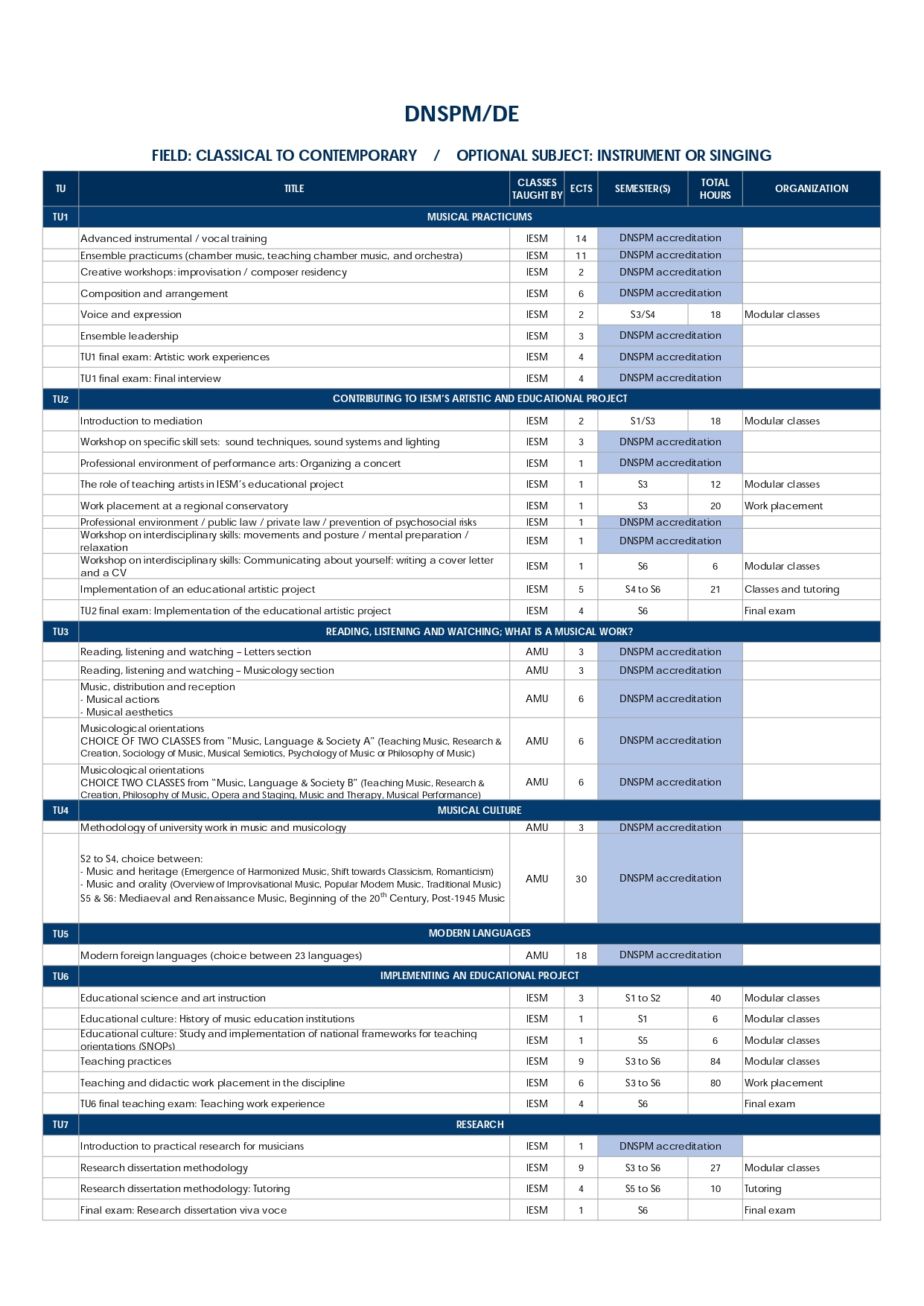
amplified current music
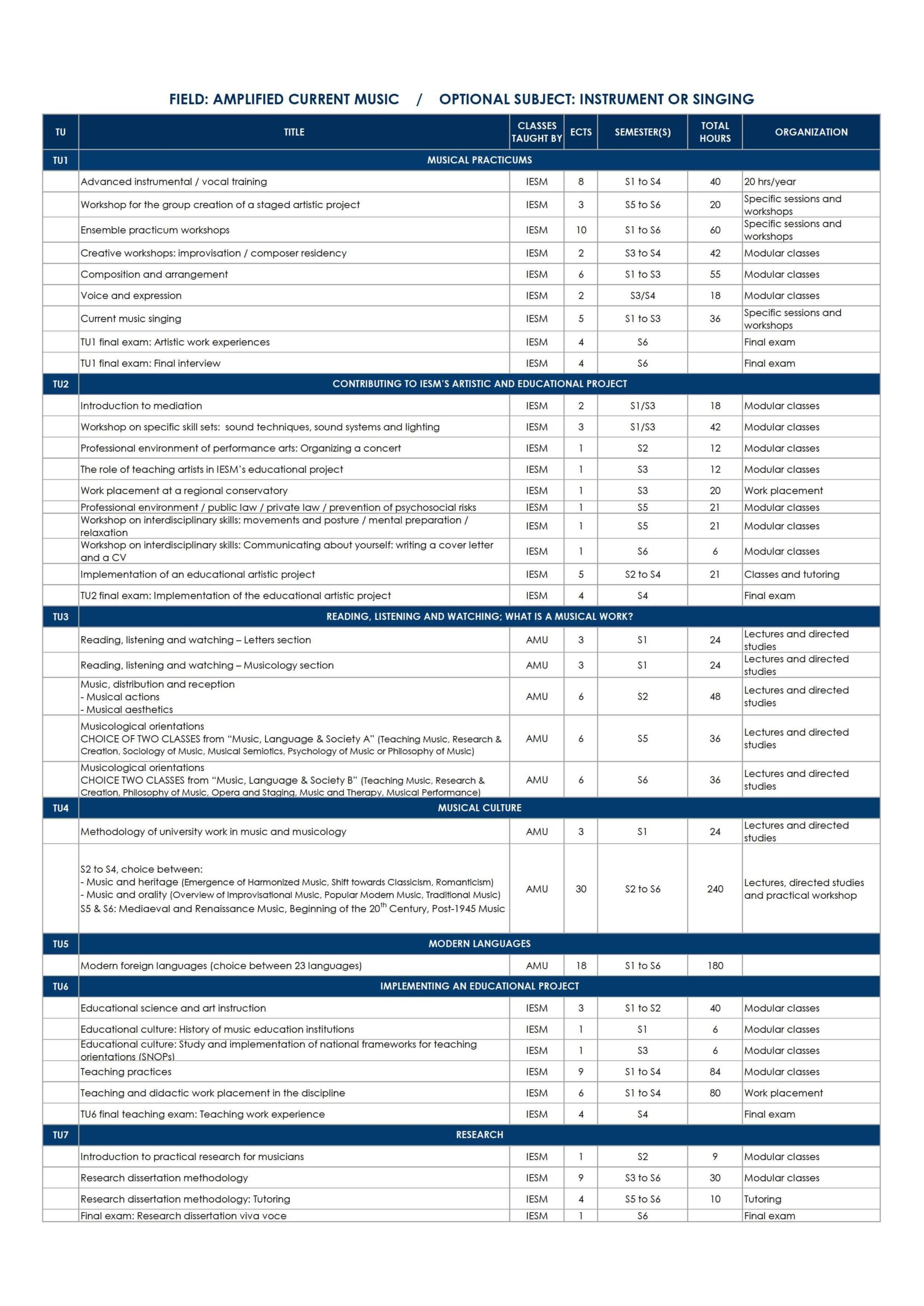
jazz and improvisational music
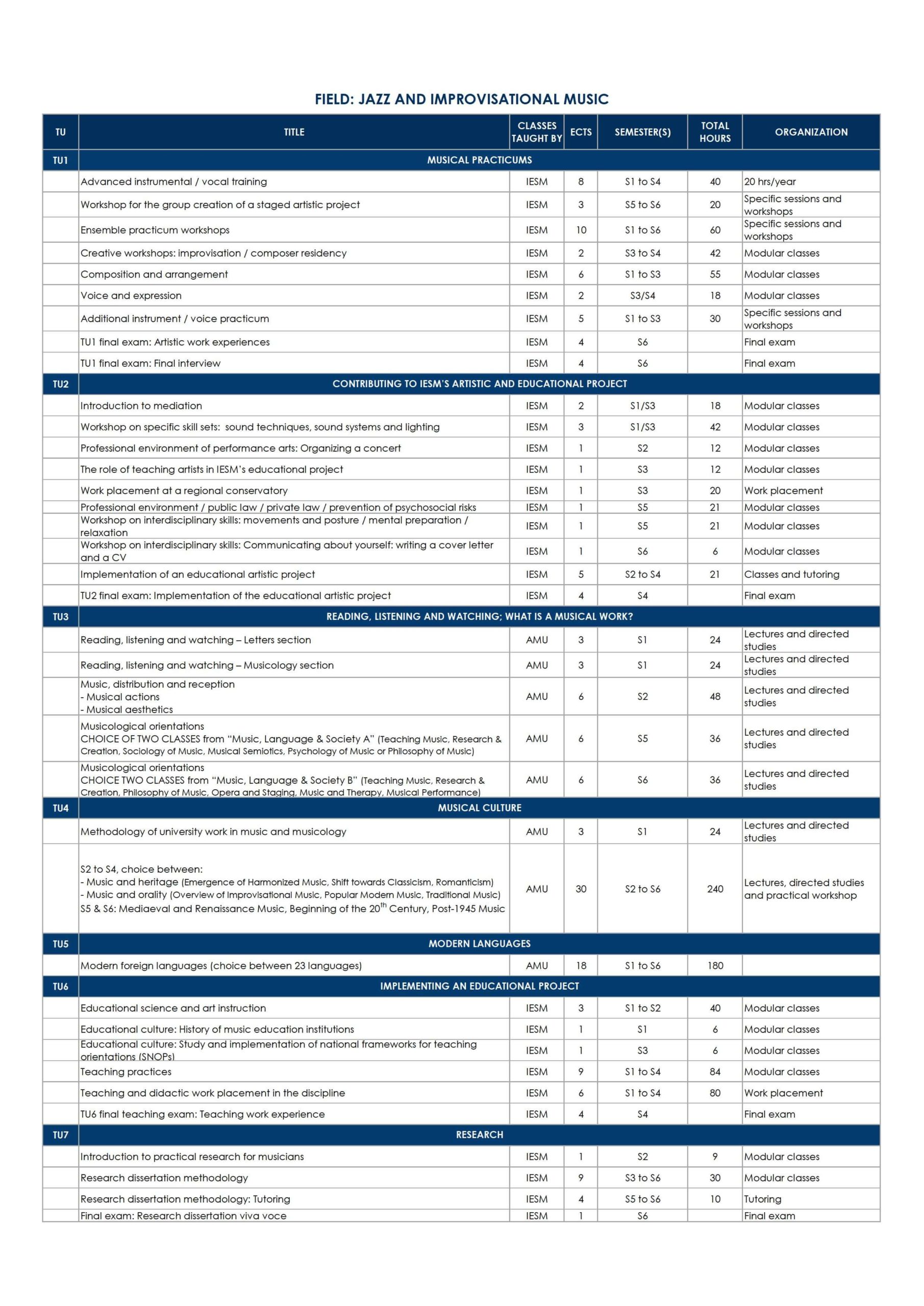
early music
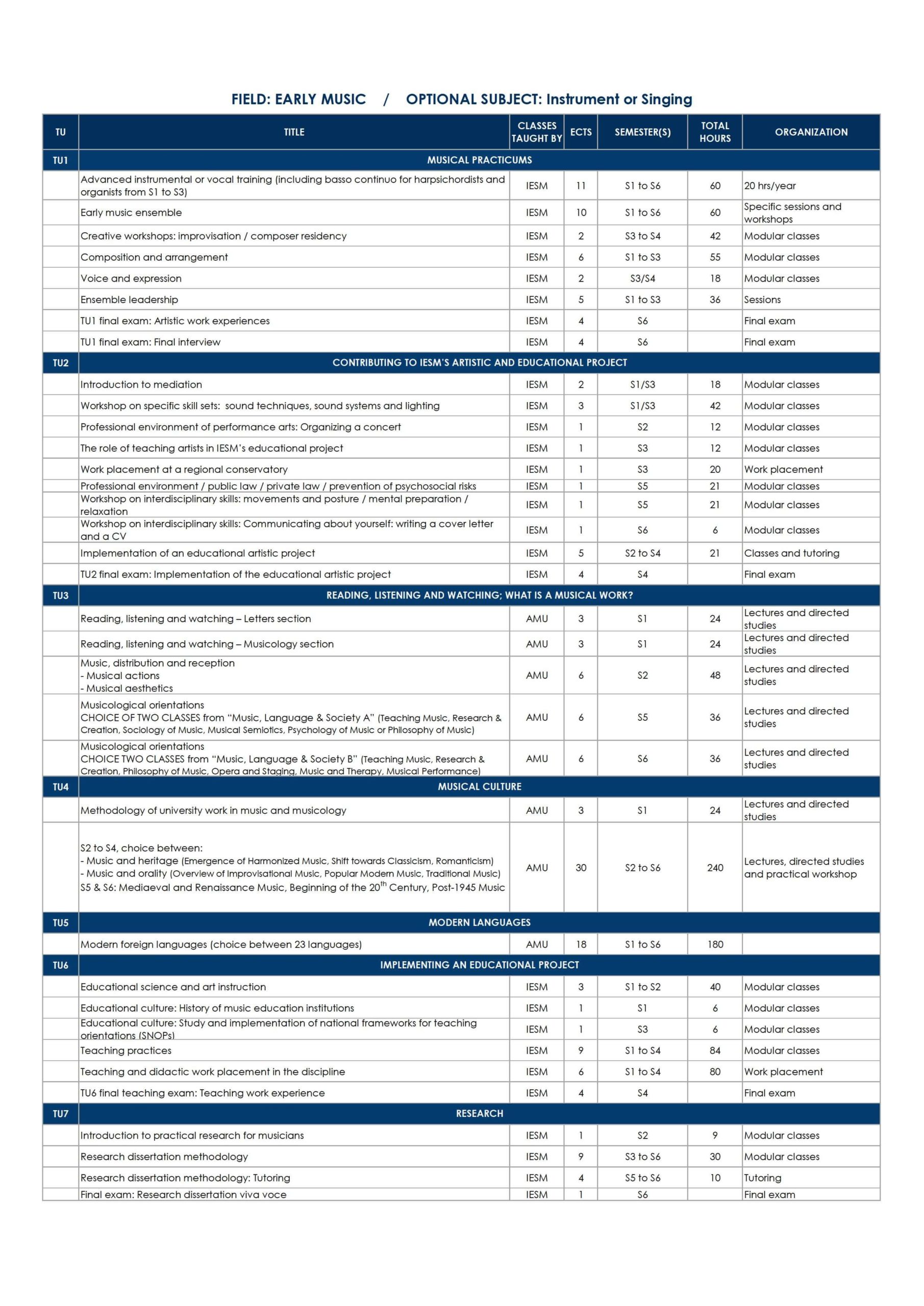
traditional music
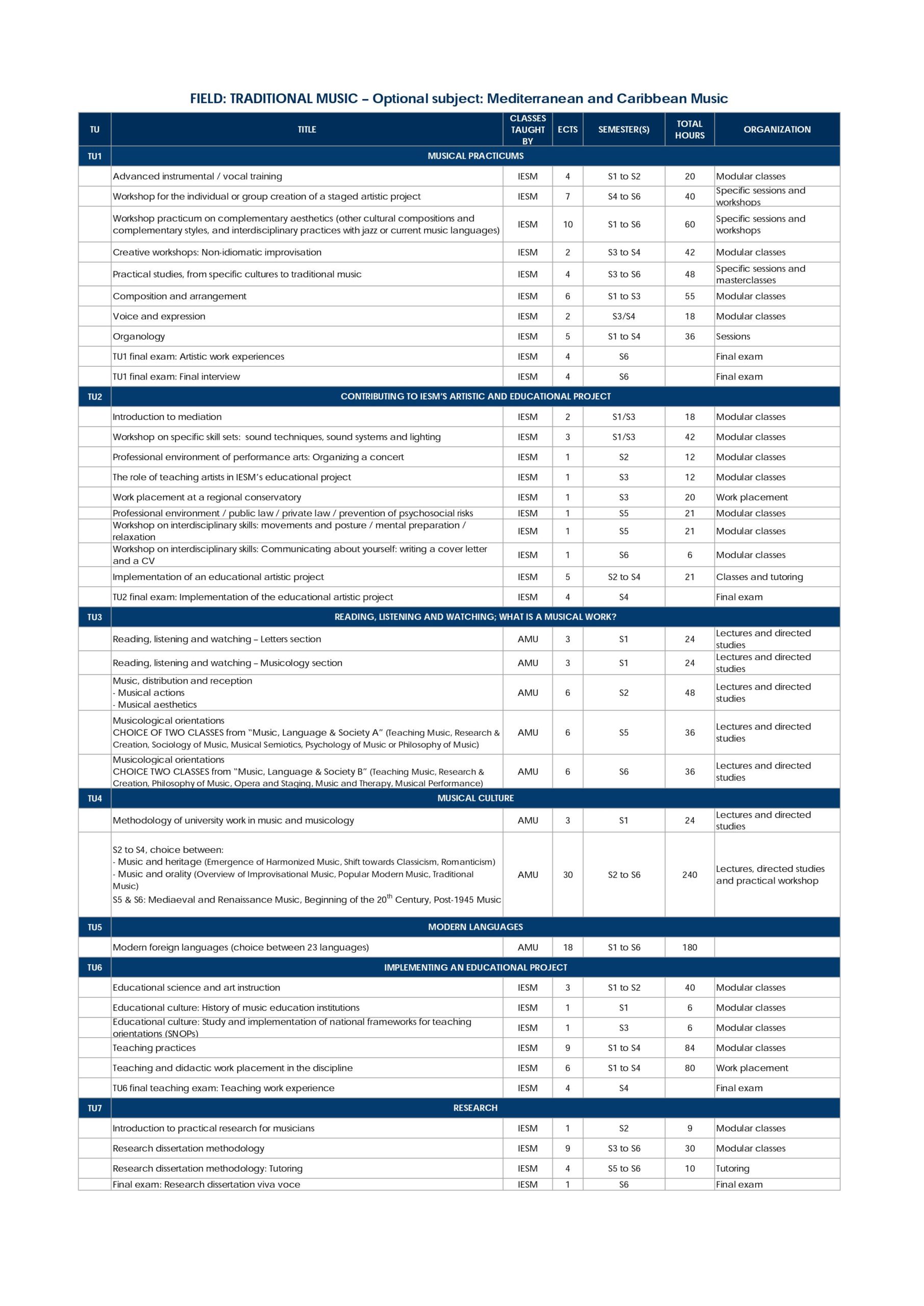
musical training
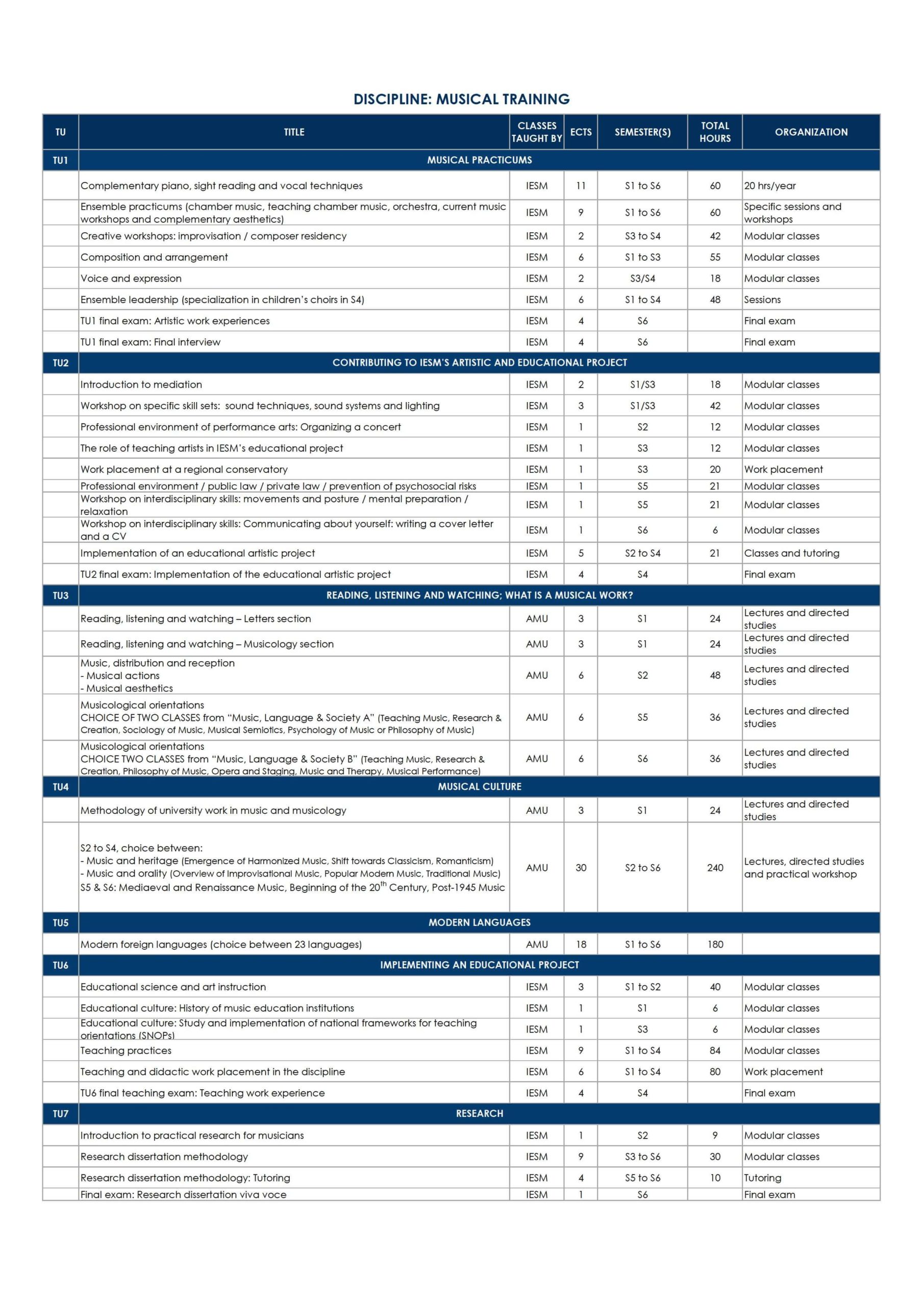
vocal ensemble leadership
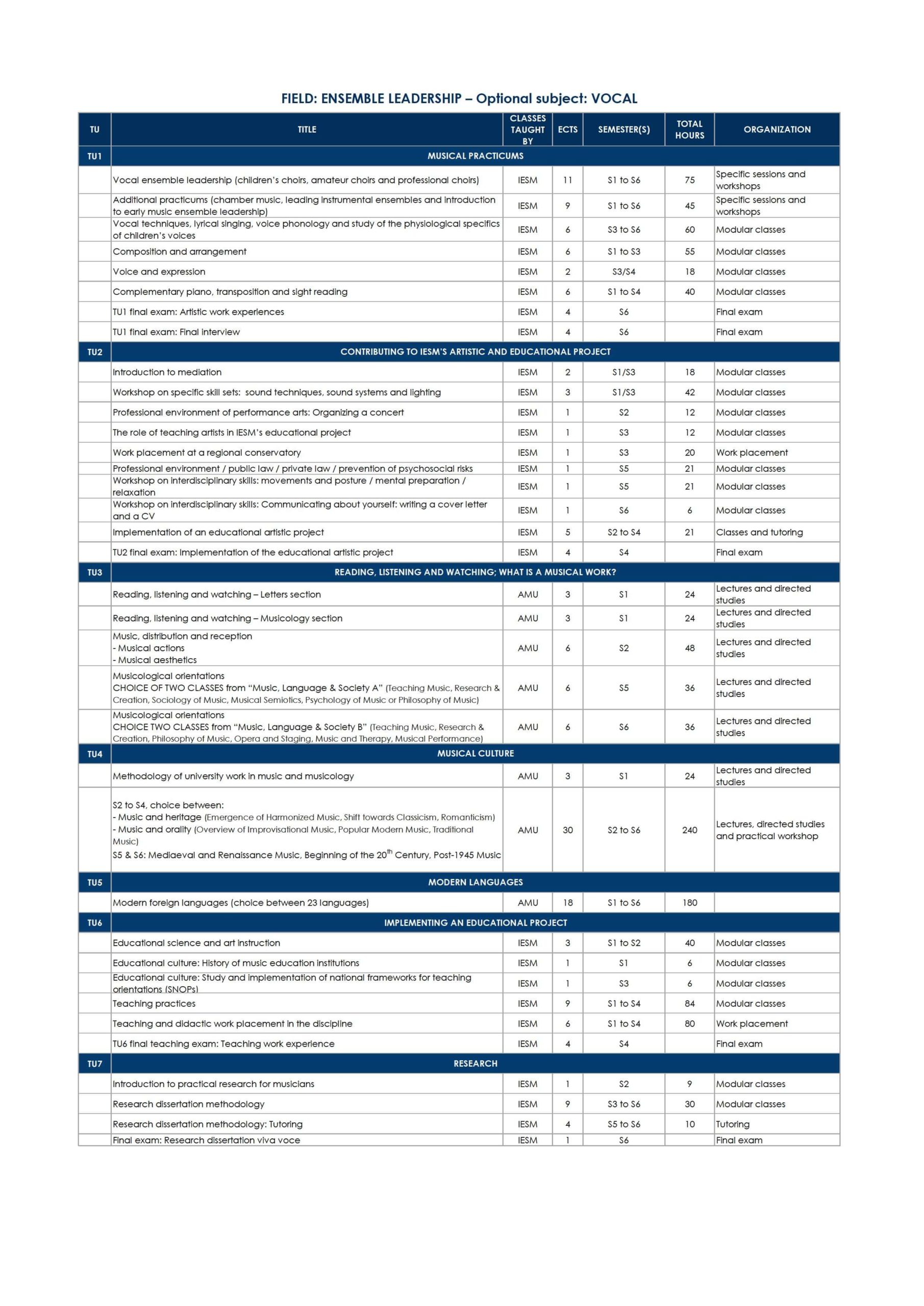
instrumental ensemble leadership
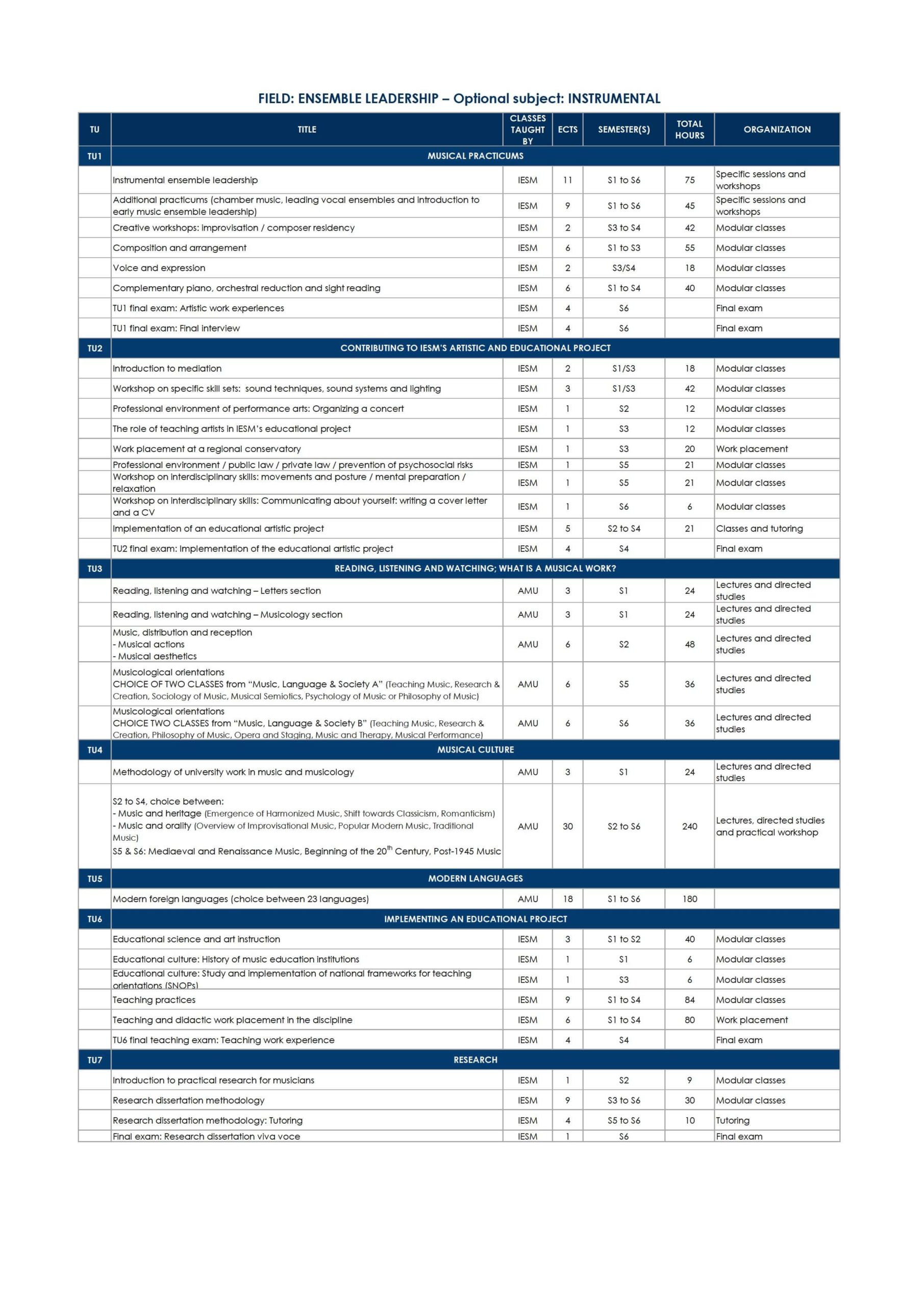
dance accompaniment
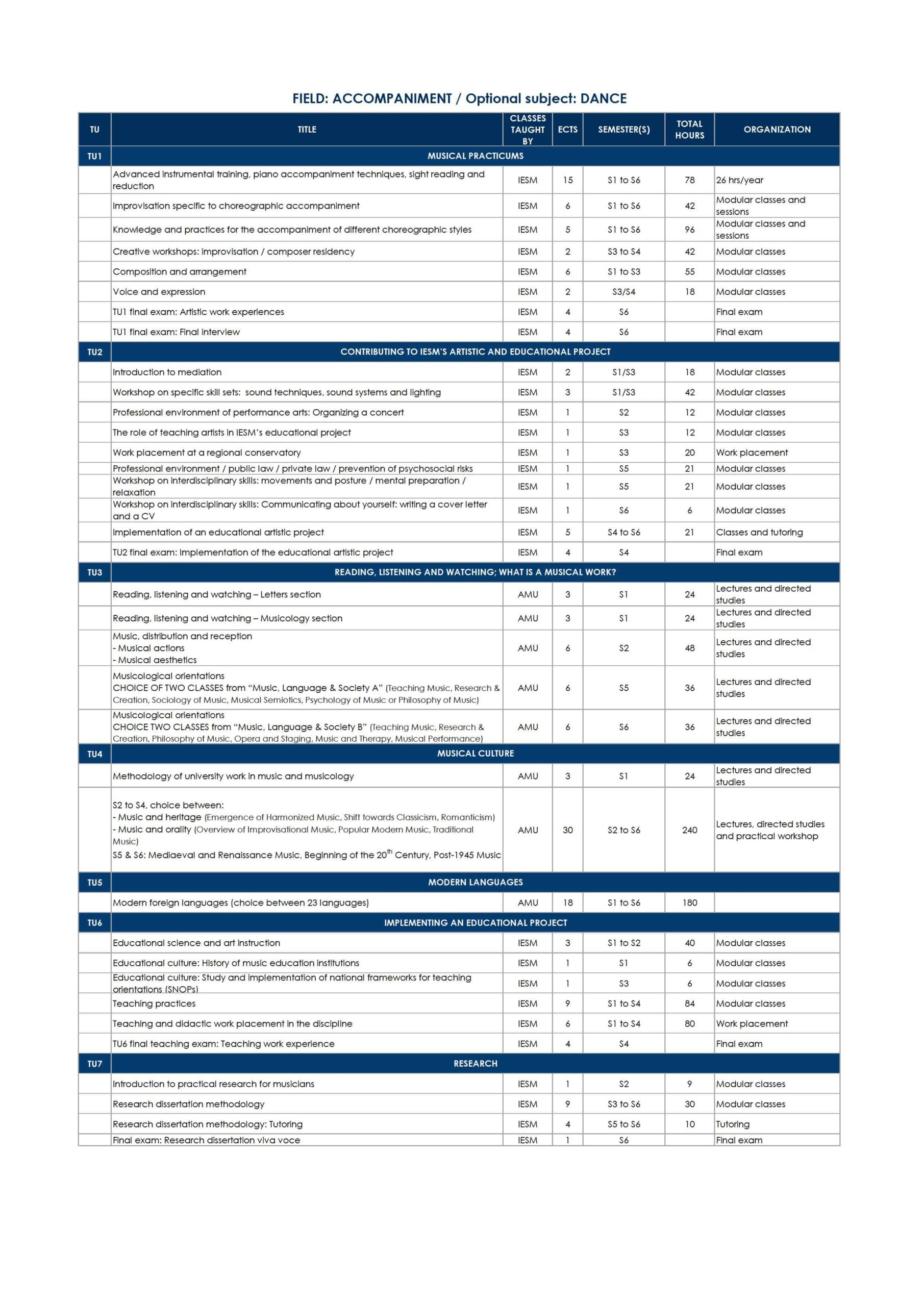
music accompaniment
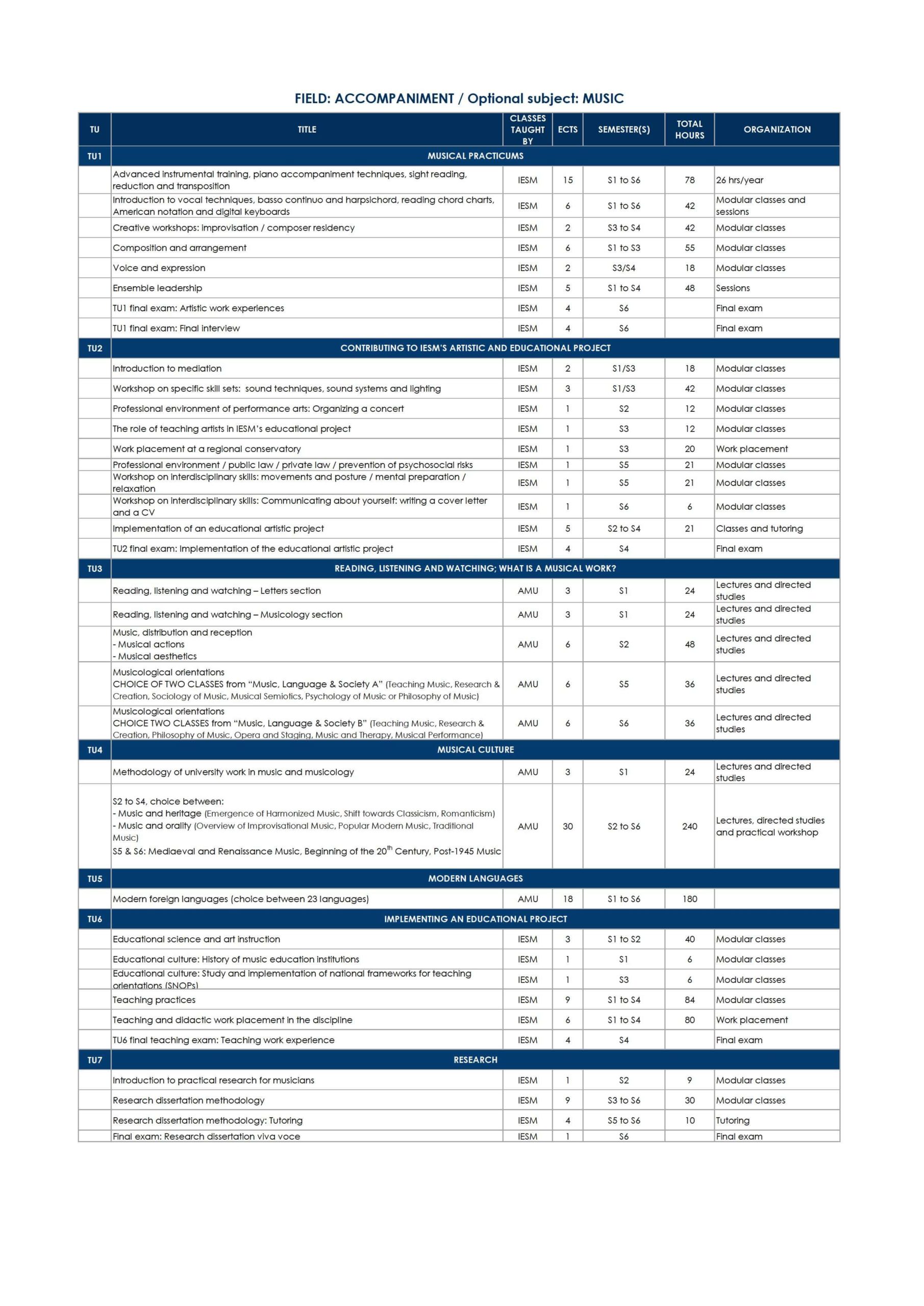
documentation
past written exams
2019
ENTRANCE EXAM 2019
Close reading text
Close reading of a passage of text relating to the arts, culture, educational science and art instruction
Test length: 3 hours – coefficient 1
Topic:
“Such is the paradox of the educational relationship; it requires that the educator must be perceived as both very close and very distant: close enough to be able to become like him one day and distant enough to want to become like him one day.”
Philippe Meirieu, Apprendre… oui, mais comment, ESF Editeur
- a) How do you understand this sentence by Philippe Meirieu?
- b) Develop your own conception of the educational relationship in specialized music instruction, providing precise examples in support of your conception, drawn from your own experiences as a music student or instructor.
Close listening
- van Beethoven, Triple Concerto, Third Movement
György Ligeti, Pápainé
Pink Floyd, “Wish You Were Here”
Assessment criteria: Writing and language correction skills; ability to build a plan; reading comprehension, general knowledge and knowledge of educational science and of specialized art instruction, and relevance of ideas and arguments.
2018
Entrance exam 2018, educational science texts
Option 1
“In a cooperative class, the teacher endeavours to remain in the background, to encourage the students to actively engage and take the initiative. At the same time, this position must not lead to the deterioration of the children’s environment. In fact, it is vital that a cooperative class should offer more stimulation that a class that is primarily led by a teacher.
This is where tools come in, to supplement the interventions that the teacher refuses to perform and to allow the children to develop projects that drive their learning. Consequently, it is essential that they should be able to count on activities that are simultaneously independent, personalized and educational.”
In cooperative instruction with your students, what “tools” could you use to develop their learning?
Entretien with Sylvain Cornac (2017), Les cahiers pédagogiques. http://www.cahiers-pedagogiques.com/Apprendre-avec-les-pedagogies-cooperatives-Demarches-et-outils-pour-l-ecole
Option 2
“The educational landscape has been transformed over the last 20 years. … The most immediately discernible change is the widespread adoption of the idea of learner-centredness. Clearly, this is not a radical new notion. All new educational schools of thought since the turn of the century, and all institutional teaching too, have long been campaigning for learning through transmitting and receiving, which emphasizes the ‘teaching process’ over the ‘learning process’, in the words of Jean Houssaye. … This learner-centredness is often identified by the term ‘constructivism’, meaning that the students construct their own knowledge and that no one can take their place in that process. In no way does this mean that the teacher’s role is no longer a decisive one. Rather than remaining the keeper of the ‘truth’, this leads teachers for example to a better understanding of their students’ mistakes, with their hidden logic, to look for its meaning and to use that logic to encourage students to surpass themselves. … They [mistakes] become useful indicators for understanding what the students are thinking and to effectively direct their classroom interventions…”
How can identifying and understanding students’ mistakes help them make progress? Answer this question based on one or two concrete examples.
ASTOLFI, Jean-Pierre, « Les mutations du paysage pédagogique », Eduquer et Former, Auxerre, Sciences Humaines, p. 17-18.
2017
▪ CLOSE LISTENING ▪
Test length : 2 hours
Close listening analysis of three different pieces.
Applicants will hear each piece twice.
- J.S. Bach, excerpt from Magnificat
- Grappelli & Petrucciani, “Little Peace in C for U”
- Britten, excerpt from Serenade for Tenor, Horn and Strings, “Dirge”
For each excerpt, present the specific musical vocabulary (structure, development, system employed, etc.) and build your analysis through the orientation of your choosing.
You may include musical examples (theme, captioned diagram, etc.) in your analysis.
In your conclusion, you should attempt to situate the excerpt chronologically and attach it to a composer or else to a musical school or movement.
▪ SIGHT ANALYSES ▪
Test length: 3 hours
For this text, the applicant must choose to write about one of the two topics presented below.
Topic 1 :
Pápainé – György Ligeti
Present the different components of this piece’s artistic language (form, themes, motifs, etc.) and build your analysis on the approach of your choosing.
Topic 2 :
The Magic Flute – Overture – W.A. Mozart
Present the different components of this piece’s artistic language (form, themes, motifs, etc.) and build your analysis on the approach of your choosing.
▪ CLOSE READING ▪
Test length : 3 hours
The applicant must discuss one of the following topics.
Topic 1 :
On the subject of cooperative learning, Alain Baudrit wrote:
“Thus, the uniqueness of cooperative learning stems, above all, from the fact that the students are encouraged to work closely together, insofar as the groups include a mix of people and because they function according to the principle of interdependence. In such conditions, there is a strong chance that the students will support one another and that mutual aid practices will emerge and grow.”
Baudrit, Alain. Apprentissage coopératif et entraide à l’école. Revue française de pédagogie. Volume 153 N°1, 2005. pp. 121-149.
What advantages and disadvantages would there be to applying this type of approach to instrumental and vocal instruction at music schools?
Present your arguments using examples taken from in-class situations.
Topic 2 :
« The question of assessing students cannot be reduced to whether or not marks are assigned or to the artificial and false idea of a contradiction between kindness and high standards. On the ground, teams are implementing alternatives to traditional assessments in the interest of increased fairness and relevance, for assessments which bolster the learning process. »
“Evaluer le travail des élèves”. Les cahiers pédagogiques, 18 janvier 2016.
What forms and methodologies could be used for more effective assessments in music education at conservatories? Support your answers with specific examples.
2016
▪ CLOSE LISTENING ▪
Test length : 2 hours
details forthcoming
▪ SIGHT ANALYSES ▪
Test length: 3 hours
For this text, the applicant must choose to write about one of the two topics presented below.
Test length: 3 hours – coefficient 1
For this text, the applicant must choose to write about one of the two topics presented below.
Topic 1 :
· Hymn to St Cecilia (excerpt), Benjamin Britten
Present the different components of this piece’s artistic language (form, themes, motifs, etc.) and build your analysis on the approach of your choosing.
Topic 2 :
· 4ème symphonie de Tchaikovski 2ème mouvement
Present the different components of this piece’s artistic language (form, themes, motifs, etc.) and build your analysis on the approach of your choosing.
▪ CLOSE READING ▪
Topic 1 :
In “(Re)construire les connaissances”, his interview with the journal Sciences Humaines, André Giordan explained that three main traditions have been identified in terms of learning models. The first tradition is “like a simple recording mechanism” and remains “in many cases the dominant teaching method”. “The second is based on practice, elevated to the rank of a principle. … The third is ‘constructivist’ teaching. It is based on spontaneous needs and individuals’ ‘natural’ interests.” This is the same teaching style as described by Jean-Jacques Rousseau in Emile, or On Education in 1762.
Questions:
- In your opinion, what is the best teaching method to help students learn music?
- What teaching method(s) do you cultivate in your classes?
Your answers should be based on concrete examples taken from classes you have given or taken.
Topic 2 :
Recent studies based on a multitude of surveys show that “good” students have “shared characteristics in their relationships to knowledge and school, regardless of social background. [They] attribute meaning to their scholastic learning and immediately see the interest of school.”
Questions:
- Do you think the same is true of “good” music students?
- What meaning might music education or music schools have for a student today?
Your answers should be based on concrete examples taken from classes you have given or observed.
Support your answers with specific examples.
2015
▪ CLOSE LISTENING ▪
Test length : 2 hours
4 excerpts from musical works
- Quartet in B Minor, Op. 33, First Movement, by Haydn
- Friendly Fire, from the album Bending New Corners by Erik Truffaz
- Symphony No. 10, Allegro, by Shostakovich
- “Lamento per la morte di Pasolini” by Quatuor Vocal de Giovanna Marini
For each excerpt, present the specific musical vocabulary (structure, development, system employed, etc.) and build your analysis through the orientation of your choosing. You may include musical examples (theme, captioned diagram, rhythmic sequences, etc.) in your analysis. In your conclusion, you should attempt to situate the excerpt chronologically and attach it to a composer or else to a musical school or movement.
▪ SIGHT ANALYSES ▪
Test length : 4 hours
– Topic A :
- Nocturnes, “Nuages”, Claude Debussy
- Nocturne, Op. 15, No. 1, Frédéric Chopin
After identifying the language components used in each of these excerpts (form, tonal plan, themes, motifs, etc.), compare the two pieces based on the approach of your choosing.
– Topic B :
- L’Enfant et les Sortilèges, “Pastourelles”, Maurice Ravel
- “Walking on the Moon”, The Police
«After identifying the language components used in each of these excerpts (form, tonal plan, themes, motifs, etc.), compare the two pieces based on the approach of your choosing.»
▪ CLOSE READING ▪
Test length : 2 hours
The applicant must discuss one of the following topics :
Topic 1 :
John Dewey (American philosopher and educator, 1859-1962) coined the famous phrase “Every lesson must be an answer”. A short while later, Edouard Claparède (Swiss biologist and psychologist, 1873-1940) asserted that it is not intelligence that serves knowledge but rather knowledge that serves intelligence: “Intelligence is the ability to solve new problems”.
Based on that new perspective, this is how things work: every human being pursues goals in their life (motivated by needs or desires). They encounter obstacles along the way though. And it is precisely this ability called “intelligence” that shifts into gear to allow them to overcome those obstacles. But intelligence cannot function in a void: it needs to call on knowledge to assist it. So, either that knowledge has already been learned, and the strategy will entail delving into our memories and experience to find the right rules to apply (which is no easy task in and of itself, because we possess a multitude of information that we don’t always think to use), or else we do not have the necessary knowledge and will have to research it or even, in some instances, cobble it together from scratch (Fournier, 2001, 159-160).
Jean-Yves Fournier, “Intelligence et apprentissage”, Eduquer et Former, Auxerre, France: Sciences Humaines, pp. 157-164.
Question 1 : Do you or do you not share the concepts put forward by J. Dewey and E. Claparède? Explain why, using examples from music education.
Question 2 : Do you think music students possess knowledge that allows them to learn to play an instrument and/or sing? If so, provide a specific example, explaining how you would help them discover or build their musical knowledge. If not, present the possible reasons for their ignorance.
Topic 2 :
In Book 3 of Emile, or On Education (1762), Jean-Jacques Rousseau wrote, “In the first place do not forget that it is rarely your business to suggest what he ought to learn; it is for him to want to learn, to seek and to find it. You should put it within his reach, you should skilfully awaken the desire and supply him with means for its satisfaction. So your questions should be few and well-chosen, and as he will always have more questions to put to you than you to him, you will always have the advantage and will be able to ask all the oftener, ‘What is the use of that question?’” (Rousseau, 2009, 231).
Rousseau, Jean-Jacques (1762/2009). Émile ou de l’éducation. Paris, Garnier Flammarion.
Question 1: Do you think that today’s instrumental instruction adheres to these remarks from Rousseau? Explain your answer using concrete examples taken from your experience as a student, a music student or a music instructor.
Question 2: As a music instructor, what should you do to put Rousseau’s vision into practice? Provide one or two precise examples taken from instrumental or vocal instruction.
2014
▪ CLOSE LISTENING ▪
Test length : 2 hours
Close listening without sheet music (30 minutes per piece, with each one played three times in a row)
For each piece, please identify :
- Its structure and form
- Its general tonal plan
- Its themes based on your analysis
- Its composition and creative process
- Its historical contextualization
- Its instrumentation
- Its stylistic characteristics and its composer
- Its historical, aesthetic and cultural contextualization and any links to other art forms.
In addition, you will support your analysis with the space, time and colour parameters specific to the piece, using the following tools (a non-exhaustive list):
- Spatial and rhythmic organization
- Relationship between the lyrics and the music
- Instrumentation / new technologies
- Language (tonality, modality and atonality)
- Timbres.
▪ SIGHT ANALYSES ▪
Test length : 4 hours
The two pieces will be played three times each.
You will have the sheet music for both pieces.
After reading the two texts and listening to a recording of a performance of each one, you will produce a comparative analysis of the two.
That analysis should cover the formal structure of the two texts and the most significant components of the language that characterizes them, as well as the principles for their development which were utilized in each compositional process.
Then, looking beyond the languages and the aesthetics of the period when the two texts were written, use your choice of a specific example to illustrate your arguments, establish the relevance of those significant components and, by comparison, consider analogies and differences, before identifying – from your own perspective – a similar compositional approach or attitude.
▪ CLOSE READING ▪
Test length : 4 hours
ENDING THE ISOLATION OF TEACHERS AND INSTITUTIONS
Teachers also require information, documents and critiques of the world in which music students will have to express themselves. To have a role in the new developments underway, music education must establish concrete connections to fields of knowledge outside of music. Expanding the scope of teaching practices: first of all, it is clear that everything relating to the body and its movements and motions must necessarily be at the forefront of teachers’ concerns. Further, both “classical” and “contemporary” dance must cease to be a separate discipline, which is merely tolerated on the fringes of instrumental disciplines. These concerns apply most directly to dance, more so than to any other form of musical art. At present, future dancers at many music schools must take one or two years of musical training, just as future instrumentalists do. In other words, it is considered that the basics must first be acquired before beginning with actual dance, but should it not be the contrary, or else both at once? Future musicians should begin with bodily expression, should experience the music through their bodies, as soon as they arrive at music school. Further, we all know and have witnessed that music instructors are, all too often, lacking in training… as teachers. So, an action which aims to make the entire music education system more effective and more “contemporaneous” necessarily demands real teacher training. Music teachers need to have a better grasp on the different knowledge derived from the humanities and social sciences (concepts of basic education, cultural action, children’s psychological development, etc.). Lastly, it is no longer possible these days for a musician teacher to continue to ignore the undeniable utility of scientific disciplines for the development of music. Whether you lament or applaud this, it is important to remember that those disciplines can be a source of blockages just as much as they offer rich and unprecedented creative possibilities. Still, the fact remains that new technologies, and the spirit and even the ideology of techniques and technologies, have left their indelible mark on all musical productions today. Information systems, audiovisual media, statistics, physiology, phoniatrics, acoustics, mathematics and more are becoming key components of the practice, analysis and learning of music and dance, now more than ever. As a result, we need to combine and provide access to multiple forms of knowledge of different practices. Many people contend that we need to take these disciplines into account as a whole, carefully avoiding the emergence of new specialists who place excessive emphasis on such concerns, which are certainly justifiable but which undermine the necessary multidisciplinarity that will allow us to move beyond the scientific detours which are omnipresent in our Western societies, marked as they are by positivism. Consequently, teachers of all backgrounds are clamouring for these encounters and broad exchanges of varied experiences, demonstrating that, although the respective goals and concrete questions to be resolved remain specific, all these problems are shared by all educators.
Ending isolation: one of the key goals is to break down isolation, both the isolation of teachers in their work and the isolation of institutions from one another.
- Teachers cannot know everything and must teach in a way that is in line with their own identities and their own passion for music. This is possible when you have a well-designed, coherent teaching team. On the whole, students don’t circulate enough between instructors. If they did, they would learn that each approach can go very far in its area of expertise, so long as it is not restrictive. Relativity is a part of 20th century culture, and music can no longer keep to itself. As part of that team, teachers can also rely on people who have specifically thought about how to assess an action. In this way, the dialectics of “the journey”, which enables them to “propel themselves into something better”, would replace general intuition (often poorly explained) in response to teaching objectives and challenges and would give them the tools they need to analyse their teaching.
- The teaching team should work hand in hand with the team of institutions. Not only do general education institutions, music schools and associations not lend each other a helping hand, but they often enter into harmful competition with one another. Some effort has been made in that direction though: in France, there are now legal texts which sustain collaboration between the Ministry of Education and the Ministry of Culture (as concerns music instruction). In particular, this has taken concrete form with the creation of training centres for school music teachers (CFMIs). But we need to make a commitment to go even further, moving towards mobile structures that are attentive to societal changes. It is not necessary for programmes and organizations to be identical everywhere. Multi-faceted responses need to be provided to new demands.
The functions of instructor-facilitators and coordinators, along with “specialists”, whose vital nature is not denied here, are becoming essential to the life of a “musical society”. It is their duty to conceptualize a venue’s musical operations, combining all the different participants and all the venue’s possibilities, with multidisciplinary, multi-institutional skills, in a comprehensive activity! The dynamics could be as follows: making music education, its contents and its methods accessible to all; making “regular” and “secular” instructors complementary to one another rather than rivals; or definitively overcoming institutional oppositions, primarily by creating workplaces and spaces for discussions and by developing and implementing joint projects. For many teachers, this is a prerequisite for putting an end to the recognition of music education problems solely in terms of financial resources (which are always insufficient by definition!) and instead designing content that takes reality into account, enabling the creation of more effective tools as part of a teaching strategy rooted in the real world. These considerations should therefore extend to other fields, beyond that of teaching. Instructors are mediators who stand at the crossroads between many different paths. Their awareness of this position allows them to craft lessons that are in line with artistic life, which is itself an active component of a real social plan.
l / How do you understand this text by Marie-Madeleine Krynen ?
Talk about what you see as the crux of the author’s concerns, namely in relation to teaching practices (in 30 to 40 lines).
2) This text, an excerpt from Quel enseignement musical pour demain, published by Institut de Pédagogie Musicale, was written in 1985 for the first International Conference on Music Education, bearing in mind that the first CEFEDEMs (training centres for dance and music teachers) were created in the 1990s. First, present your conception of the importance of teacher training to the lives of teaching artists, and of the ensuing changes to initial music training and training at conservatories. Then, from a general perspective, describe the most significant changes to music education in France. Feel free to justify your point of view with a few meaningful examples (in 20 to 30 lines).
2013
▪ CLOSE READING ▪
Test length : 2 hours
If I had to choose between intuition and musical science, I wouldn’t hesitate for a moment: I would choose intuition. All the same, God knows the importance I place on understanding musical texts and outlining interpretive performance choices! That being said, any interpretive process both begins and ends with emotions. Intuition puts the performer on the clear path and confirms that the performer has indeed found it. In a certain respect, even “learnt” culture can eventually transform into intuitive culture. In other words, you could say that each auditory experience feeds our intuition. Whether your are listening to a group of Yiddish musicians, attending a Romany party or watching a televised report on balalaika players, you are stocking up on sound imagery full of emotional and cultural references. It is up to the performer to interpret those references and dig into their memory to find inspiration that will allow them to express the most subtle connotations. This is the point when the performer needs their full experience as a musician and their theoretical culture to avoid the pitfalls of a performance that would put Schubert and generic music on equal footing.
Xavier Gagnepain
Excerpt from Du musicien en général… au violoncelliste en particulier, 2001
l / How do you understand this text by Xavier Gagnepain? Talk about what you see as the crux of the author’s concerns (in 10 to 20 lines).
2/ Do you find the author’s position regarding musical performances to be more:
- utopian?
- pointless?
- dangerous?
- interesting?
- necessary?
- obvious?
Choose the term that most closely reflects your opinion and justify your point of view with a few meaningful examples (in 30 to 40 lines).

